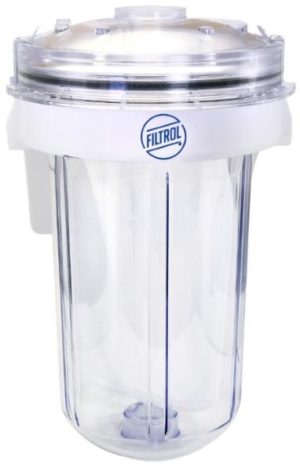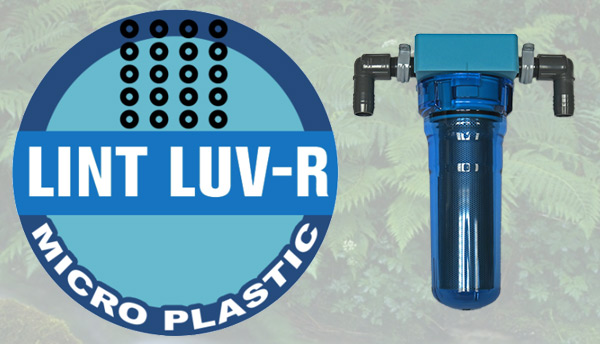How To Reduce Microfiber Pollution From Your Laundry

If you wear much synthetic clothing, you likely create microfiber pollution every time you do the laundry. A type of microplastics, microfibers are plastic fibers smaller than 5 millimeters. When we wash synthetic fabrics, they shed these microfibers, which get washed down the drain with the wastewater, adding to the worldwide problem of microplastic pollution.
The Microplastic Problem
Plastic pollution is all around us, from the highest mountain to the depths of the world’s oceans. While plastic litter is a well-known problem, more people are becoming concerned about microplastic exposure. The universal use of plastics means that microplastics are widespread throughout the environment. Scientists have found them in our food, water, and even the air.
Researchers are still trying to determine the scale of this issue, but these tiny particles really add up. Australian scientists published a study in 2020 estimating that between 9.25 and 15.86 million tons of microplastics can be found on the ocean floor.
There are some obvious ways to prevent microplastics from entering the environment, like not littering. And as we learn more about the problem, we are discovering different ways microplastics enter the environment, such as through the laundry. Let’s explore how we can help keep microplastics from our laundry out of rivers, lakes, and the ocean.
How Does Washing Clothes Cause Microplastic Pollution?
Many clothes and linens contain synthetic fibers, such as fleece, acrylic, and nylon. The friction of the washing machine releases tiny particles into the wash water. Unfortunately, wastewater treatment plants are unable to capture these particles, so they are released into the environment, where they find their way into the ocean or even drinking water sources.
How Can I Reduce the Release of Microfibers From My Laundry?
There are a variety of steps you can take to prevent or reduce this source of pollution.
Don’t Use the Delicate Cycle
Researchers at Newcastle University explored how various washing techniques impact the release of microplastics. The amount of water in a load has a significant impact — and the delicate cycle has a higher volume of water than other settings. They found that washing clothes on delicate releases 800,000 more fibers than a standard wash cycle.
Fill the Washer
Running full loads of laundry also reduces the release of microplastics. In fact, Newcastle University researchers estimate that small loads release twice the microfibers compared to large loads. Likewise, shorter wash cycles, laundering clothes less often, and using cold water are all ways to reduce microfiber release. These methods also save energy.
Get a Laundry Filter or Ball
Although wastewater treatment plants aren’t designed to remove such small particles, there are laundry filters and balls that do. Consumers can buy these products, which help capture the microfibers before the water carries them off. The balls go directly in the washer, while the filters connect with the laundry discharge outlet and require installation. Both the filters and balls need to be cleaned out periodically to remain effective.
Manufacturers say that the filters also help protect septic systems by preventing blockages and premature pump and pipe failures. However, according to studies and user observations, these products vary in their effectiveness at catching microplastics. Here is a sampling of the microfiber laundry solutions currently available.
Filtrol Filter
According to the manufacturer, this product removes 89% of microfibers and retails for $160. Earth911 obtained a promo filter to try out and found it easy to install and use. The unit seems highly durable, and replacement parts are available if needed. The filter needs to be cleaned out periodically or the laundry discharge water will bypass the filter. Filtrol also makes a commercial filtration system for laundromats, hotels, and resorts.

MicroPlastics LUV-R Filter
This product removes 87% to 100% of microfibers from the laundry discharge. The filter costs $190, and replacement parts are also available. The Lint Luv-R needs to be cleaned out approximately every two to three loads of laundry, according to the manufacturer.

Cora Ball
Although this is the easiest product to use, it is also the least effective of the three options. It removes approximately 26% of microfibers, according to the University of Toronto. The Cora Ball is made of recycled and recyclable plastic, but many users wonder how effective it really is. However, 26% is a big step in the right direction and is a good option for people who use laundrymats.

Minimizing Laundry Microfiber Pollution
While there’s still a lot we don’t know about microplastics, researchers continue to uncover new information. For example, a recent pilot study found that tumble drying synthetic clothing releases even more microfibers into the air than laundering synthetics releases into the water. The study suggests the need for dryer vent filtration systems but until we learn more, you might consider line drying your synthetics.
To reduce microfiber pollution in the wash, any approach mentioned in this article helps and is a good start. If you combine strategies, such as washing large loads in cold water and using a Cora Ball, your positive impact expands.
Another way to cut down on this is to buy cotton products, even better second hand, which is great in two ways for the environment!
I am not a big fan of tumble dryers, they use a lot of electricity and they leave the clothes all creased up. The clothes don't smell as nice as when they are dried naturally, whether inside or outside! Added to the fact of pumping microplastics into the air, this is a no no! I have been using a new washing system for quite some time now and it seems to work! A short wash using soap nuts and occasionally the laundry sheets now available (for things like towels and sheets) for that extra clean. I am testing the laundry sheets out to see how they perform. My firm favourite is soap nuts for washing!
The blog song for today is: "the magic number" by De La Soul
TTFN



